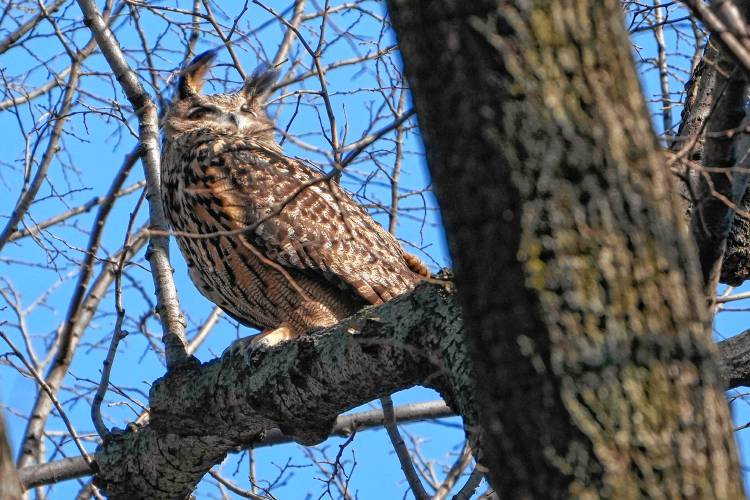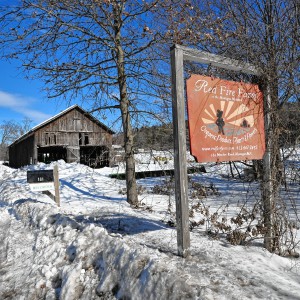Guest columnist Martha Rullman: Rodenticides are killing wildlife up the food chain

Flaco, New York City’s celebrity owl, had a severe pigeon-borne illness and high levels of rat poison when he fatally crashed into a building. AP
| Published: 02-18-2025 6:31 AM |
The steady rise in the number of hawks, owls, eagles and other wildlife that are victims of anticoagulant rodenticide poisoning has sparked increased concern among residents of Massachusetts and across the country. The widespread use of anticoagulant rodenticides (ARs) and their significant impact on wildlife is alarming.
Wildlife rehabilitators are being inundated with birds of prey and mammals poisoned by these chemicals, which kill by preventing blood from clotting, resulting in fatal hemorrhaging. The problem has increased exponentially since the pest control industry has embraced and scaled up the use of bait box stations, which contain second-generation anticoagulant rodenticides, or SGARs.
These refillable bait boxes, which are set up by pest control companies outside of buildings and restocked on a continuous basis, contain a ready supply of poisoned food, which actually attracts animals to the property. Since small mammals form such an important part of the food chain for birds of prey and other wildlife, widespread secondary poisoning of non-target animals in both urban and rural areas has exploded.
Sadly, the long-term use of these poisons is actually worsening the problem of rats and mice by sickening and killing the natural predators that feed on them.
SGARs were federally banned for retail sale in 2015 when it became increasingly evident that they harmed not only wildlife but pets and children. While they are prohibited for consumer purchase in the Massachusetts, commercial use is allowed by licensed pest control companies. And in spite of the federal ban on retail sales, they have become the primary means of rodent control in the pest control industry, despite the fact that there are safer and more effective alternatives.
Although there has been some progress through legislation banning the use of SGARs in a few states and in some municipalities, they are not prohibited for use on private property in most states. Lobbyists for the pest control industry have caused a number of bills to fail at the state level.
SGARs poison wildlife in three different ways: Since these compounds are slow-acting and bioaccumulate, when a mouse or rat ingests the bait, it can then live on for several days. In a weakened state, it becomes an easy meal for predators. Anything that catches or scavenges the poisoned rodent then also becomes poisoned. Rodents also carry off and store, or “cache” the bait, spreading it in the environment where other non-target wildlife species such as chipmunks, squirrels and raccoons can ingest it.
Article continues after...
Yesterday's Most Read Articles
 Nearly all of South Hadley High’s student body holds ‘walkout to walk-in’ rally to oppose cuts, call for funding reform
Nearly all of South Hadley High’s student body holds ‘walkout to walk-in’ rally to oppose cuts, call for funding reform
 Northampton schools probe staff response to student’s unfulfilled IEP
Northampton schools probe staff response to student’s unfulfilled IEP
 UMass basketball: Minutemen land Florida Tech transfer Donovan Brown
UMass basketball: Minutemen land Florida Tech transfer Donovan Brown
 UMass Chancellor Reyes outlines changes amid financial uncertainty under Trump administration
UMass Chancellor Reyes outlines changes amid financial uncertainty under Trump administration
 Northampton Housing Authority boss placed on leave
Northampton Housing Authority boss placed on leave
 Four Red Fire Farm workers arrested as part of ICE operation in Springfield
Four Red Fire Farm workers arrested as part of ICE operation in Springfield
Larger mammals like bobcats, foxes and coyotes that have consumed either dead or living animals that have ingested the bait may not die for a period of time, but long-term, chronic exposures will severely impact their immune systems, weakening them and making them more susceptible to mange and other diseases.
A number of studies indicating the increasing persistence of rodenticides in the tissues of wildlife species is evidence that these chemicals are becoming ubiquitous in rodent-predator-scavenger food webs. A 2020 study reported that 100% of red-tailed hawks tested at Tufts Wildlife Clinic had anticoagulant rodenticides in their systems. What is even more surprising to many is that a number of studies found that rodenticides are an increasing cause of population decline in fishers.
After their reintroduction in the 1950s, fisher populations in the Northeast gradually recovered from over trapping and habitat loss, but they are now declining. In one study conducted in five Northeastern states, exposure rates to rodenticides were as high as 100% in Vermont. Given the elusive and solitary nature of these animals, their widespread population decline from chronic rodenticide exposure is indicative of how widely distributed these poisons are in the environment.
Some encouraging news is that two bills were recently filed in Massachusetts for the purpose of phasing out the use of rodenticides in the state. HD.1721 and SD.1447 would restrict the use of anticoagulant rodenticides in Massachusetts to protect wildlife, pets, people and the environment. Please contact your legislators and ask them to cosponsor this important legislation. Residents also can ask local property and business owners to look into wildlife-safe rodent control alternatives and choose companies that use nonpoisonous pest control methods.
Many cities and towns also have successfully initiated legislation on the local level to ban the use of SGARs on private and town-owned property. Citizens speaking up and working with town leaders to restrict or eliminate the use of rodent poisons in their communities is making a difference.
Martha Rullman lives in Northfield.






 Carolyn Cushing: Stop perpetuating dehumanization
Carolyn Cushing: Stop perpetuating dehumanization Guest columnist Emily Quintana, Kate Kruckemeyer, and Stephanie Baird: Fighting ICE attack on principle of sanctuary
Guest columnist Emily Quintana, Kate Kruckemeyer, and Stephanie Baird: Fighting ICE attack on principle of sanctuary Laurel Gardner: Are ADUs for residential housing or for profit?
Laurel Gardner: Are ADUs for residential housing or for profit? Ava Gips: Join national day of protest on April 5
Ava Gips: Join national day of protest on April 5
